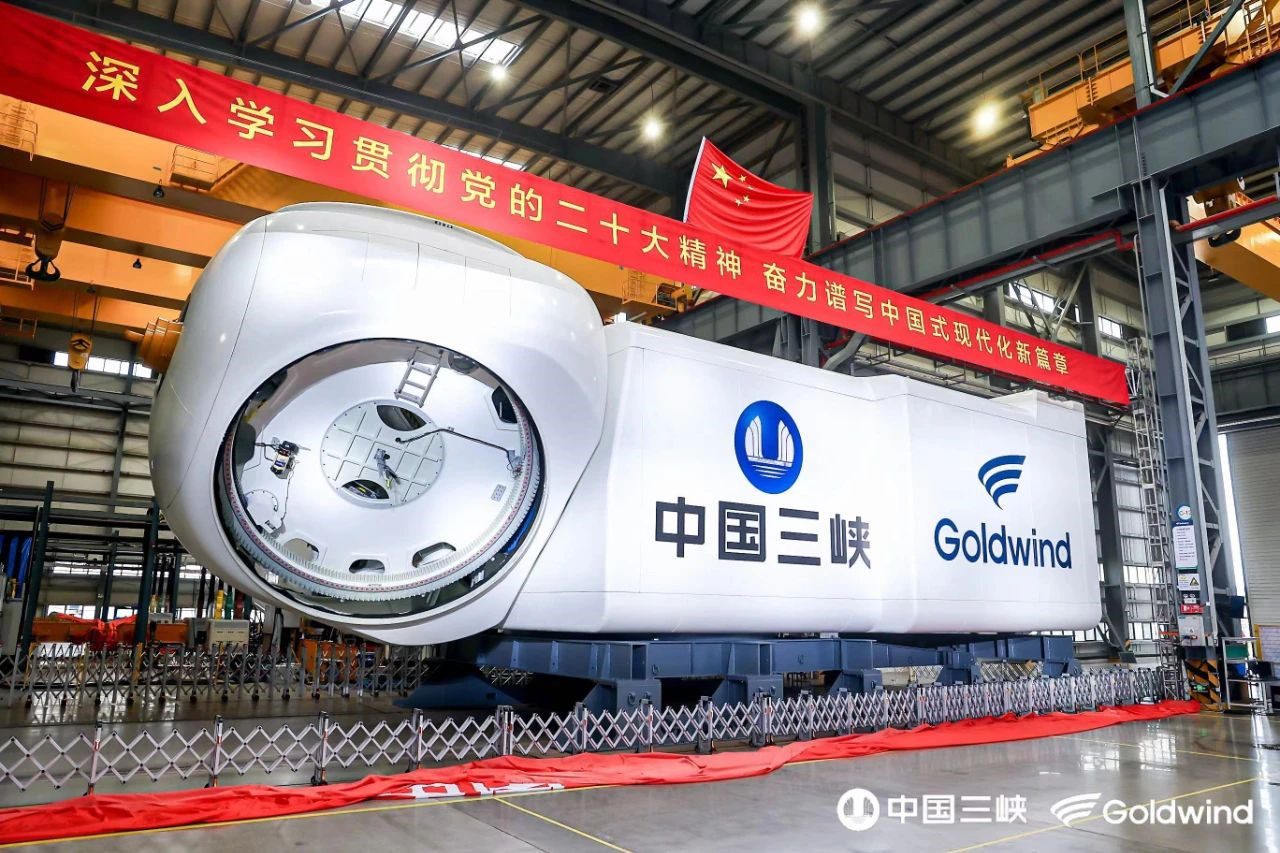Wind turbines are getting ever larger, particularly offshore, but even by the standards of modern titans those being installed at the Zhangpu Liuao offshore wind farm are absolute beasts. According to the China Global Television Network, the farm is to be the first outing of the 16-megawatt turbine being produced by Goldwind Science and Technology Co., and will have a combined capacity of 400 megawatts.
The hub will sit 146 meters (480 feet) above the ocean, one and a half times the height of the Statue of Liberty’s torch. The blades will sweep out a diameter of 252 meters (827 feet), making each blade longer than a football pitch. The China Three Gorges Corporation, who are building the farm, estimate each turbine will produce enough electricity to power 36,000 typical Chinese households and prevent the release of 54,000 tonnes of carbon dioxide a year.
Larger turbines need longer blades to drive them, and therefore to be placed on higher towers. This has its advantages, since the wind is steadier and blows more frequently at higher altitude, but it also involves plenty of technical challenges. When wind farms were overwhelmingly on land, transporting the components by truck put something of a ceiling on the size of each turbine, reinforced by neighbors’ more strenuous objections to taller installations.
However, as the nations around the North Sea started moving more of their wind farms offshore, developers started to seize the opportunities provided by installation from ships. The first offshore wind farm, Vindeby, was built in 1991 and used 0.45 megawatts. Once offshore wind farms with several hundred megawatts of total power started appearing they used turbines in the 3-4-megawatt range. Operating at an average of 40 percent capacity, as is common, a single turbine like this can produce enough power for up to 4,000 UK households.
Ten years ago when farms that size first started appearing offshore they needed large public subsidies. In a (very successful) effort to make offshore wind competitive with fossil fuels, manufacturers and developers decided fewer, more powerful turbines were the answer. The current largest offshore wind farm in the world, Hornsea 2, uses 8.0-megawatt machines. Last year also saw the commissioning of Moray East using 9.5-megawatt giants.
China, on the other hand, has continued to favor larger numbers of small turbines. It’s largest current offshore farm, Jiangsu Qidong, uses a mix of turbines from different manufacturers, but the average size is 6 megawatts – big if they were on land, but well behind the European offshore equivalents. The largest model featured on Goldwind’s website is 8.0 megawatts.
The nacelle of the 16-megawatt Goldwind wind turbine, soon to be the largest operating in the world. Image credit: Goldwind Technology
Meanwhile Danish manufacturer Vestas are testing the prototype of their 15-megawatt V236.
However, when China decides to go big it seldom does things by halves. If the state-sponsored media outlets are to be believed, they have seized the lead in the massive turbine race. In addition to the behemoths reportedly being installed 33 kilometers (20 miles) off Fujian province, Haizhuang Wind Power has announced production of an 18-megawatt leviathan, and Mingyang Smart Energy have announced plans to “move beyond the 18 [megawatt] threshold”. One expert is predicting 25 megawatts soon.
One aspect of offshore wind where Europe still has the lead is in floating wind farms. Although still largely experimental, floating platforms allow wind farms to be built in deeper waters which are usually further from shore and have steadier winds. The FloatGen test site off Brittany uses a 2-megawatt turbine, puny by these standards, but whose location has just allowed it to run at 60 percent capacity over the last three months.
Source Link: China Has Started Building A Wind Farm Using The World’s Largest Wind Turbines
